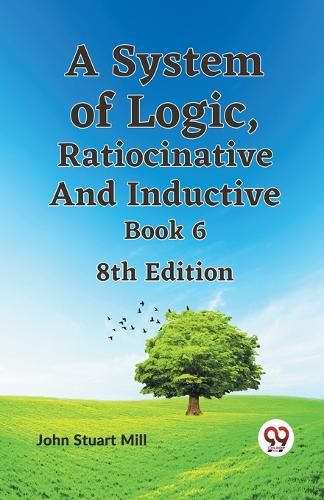Readings Newsletter
Become a Readings Member to make your shopping experience even easier.
Sign in or sign up for free!
You’re not far away from qualifying for FREE standard shipping within Australia
You’ve qualified for FREE standard shipping within Australia
The cart is loading…






This title is printed to order. This book may have been self-published. If so, we cannot guarantee the quality of the content. In the main most books will have gone through the editing process however some may not. We therefore suggest that you be aware of this before ordering this book. If in doubt check either the author or publisher’s details as we are unable to accept any returns unless they are faulty. Please contact us if you have any questions.
The famend British philosopher and political economist, John Stuart Mill, is credited with the authorship of a vast work entitled "A System of Logic, Ratiocinative and Inductive Book 6." The readers' curiosity is piqued, prompting them to persist in analyzing similarly, as the protagonist reveals a notable inclination for self-gratification. Certain narratives are probably characterized by their macabre and unconventional nature, while others own a diffused charm that step by step captivates the reader. This observe gives a complete analysis of the concepts and procedures of logic, aiming to construct a systematic basis for the approaches of reasoning and induction. Within this seminal educational publication, Mill delves into the intricacies of logic, delving into the nuanced distinctions among deductive reasoning, also referred to as ratiocinative reasoning, and inductive reasoning. The policies governing both kinds of inference are thoroughly delineated by using the author, who additionally presents a systematic technique for generating sound arguments and appearing empirical research. The significance of Mill's paintings lies in its enormous impact on the progression of the clinical technique, because it underscored the vital position of empirical proof and experimentation as imperative factors within the derivation of conclusions. The creator initiates a scholarly discussion regarding the canons of induction, which comprise the techniques of agreement, difference, and concomitant variation.
$9.00 standard shipping within Australia
FREE standard shipping within Australia for orders over $100.00
Express & International shipping calculated at checkout
This title is printed to order. This book may have been self-published. If so, we cannot guarantee the quality of the content. In the main most books will have gone through the editing process however some may not. We therefore suggest that you be aware of this before ordering this book. If in doubt check either the author or publisher’s details as we are unable to accept any returns unless they are faulty. Please contact us if you have any questions.
The famend British philosopher and political economist, John Stuart Mill, is credited with the authorship of a vast work entitled "A System of Logic, Ratiocinative and Inductive Book 6." The readers' curiosity is piqued, prompting them to persist in analyzing similarly, as the protagonist reveals a notable inclination for self-gratification. Certain narratives are probably characterized by their macabre and unconventional nature, while others own a diffused charm that step by step captivates the reader. This observe gives a complete analysis of the concepts and procedures of logic, aiming to construct a systematic basis for the approaches of reasoning and induction. Within this seminal educational publication, Mill delves into the intricacies of logic, delving into the nuanced distinctions among deductive reasoning, also referred to as ratiocinative reasoning, and inductive reasoning. The policies governing both kinds of inference are thoroughly delineated by using the author, who additionally presents a systematic technique for generating sound arguments and appearing empirical research. The significance of Mill's paintings lies in its enormous impact on the progression of the clinical technique, because it underscored the vital position of empirical proof and experimentation as imperative factors within the derivation of conclusions. The creator initiates a scholarly discussion regarding the canons of induction, which comprise the techniques of agreement, difference, and concomitant variation.